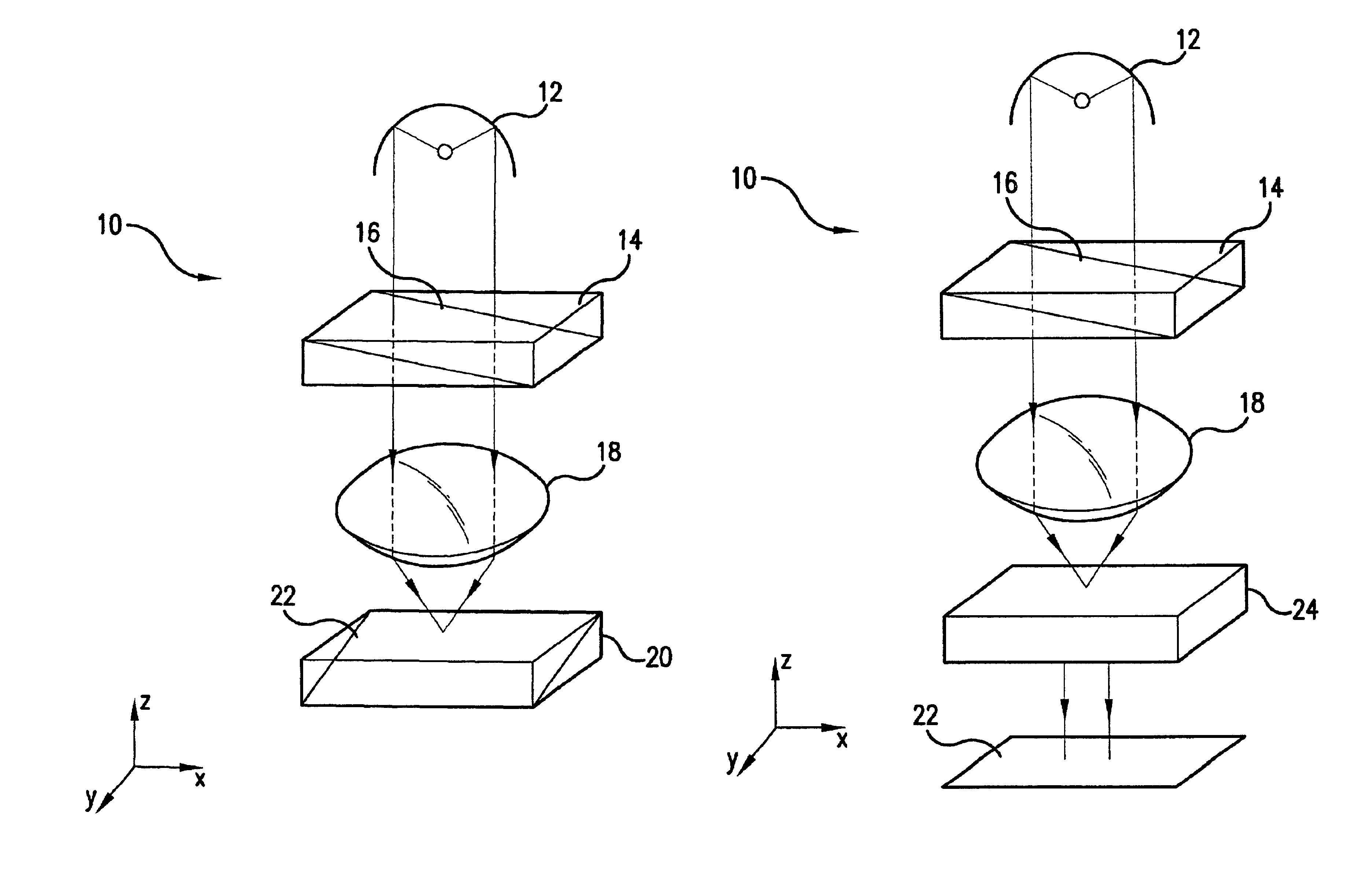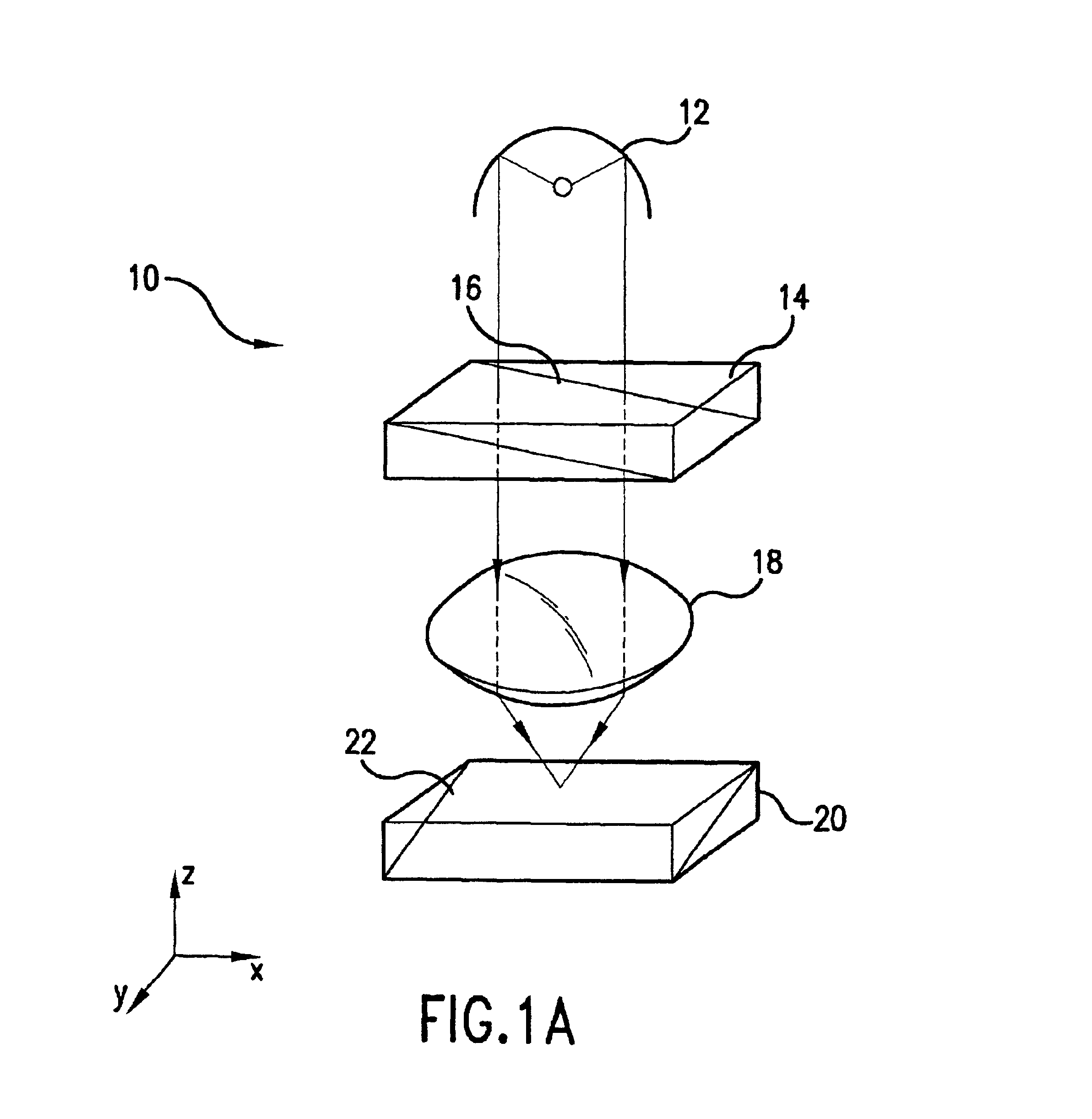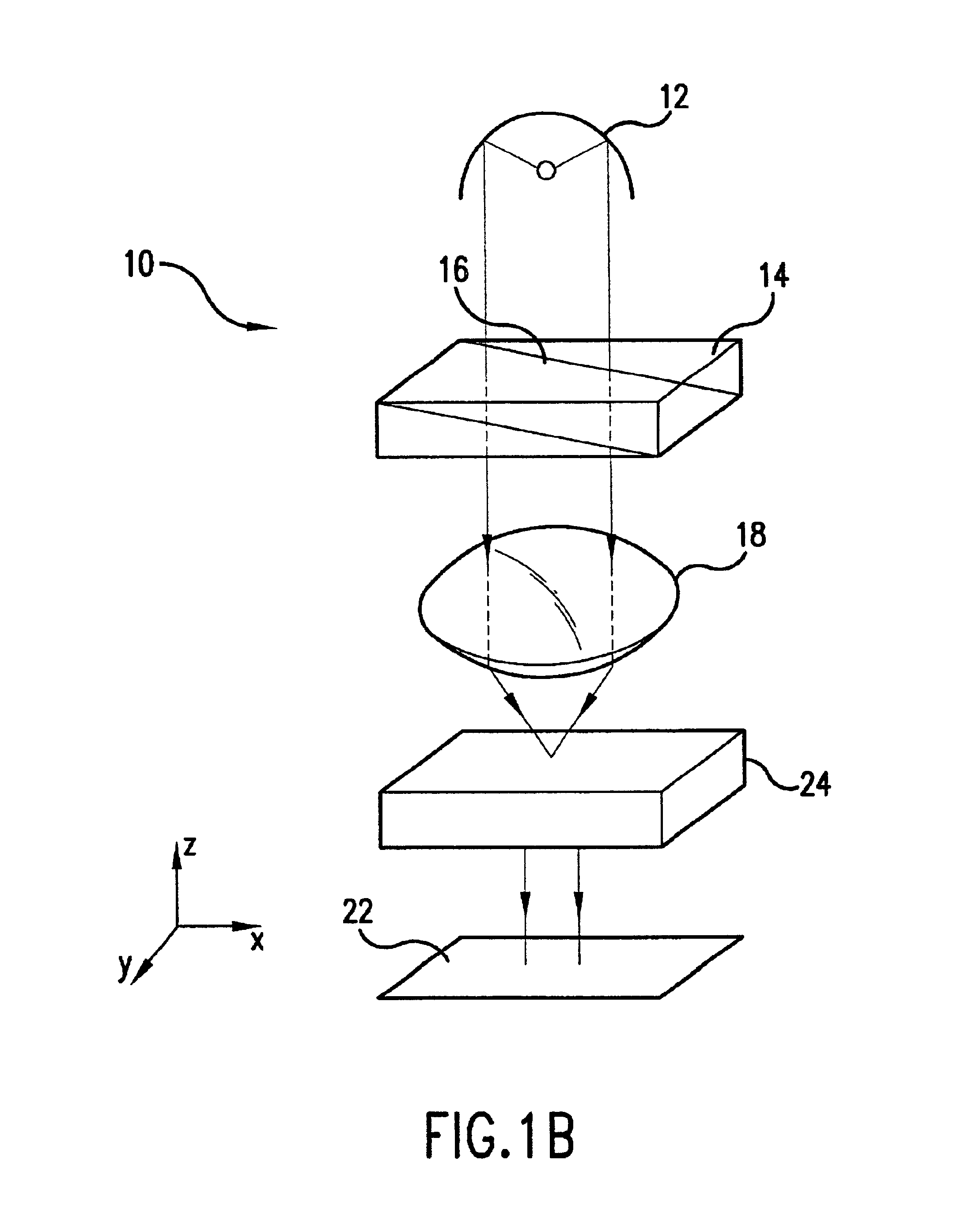Method for characterizing optical systems using holographic reticles
a technology of optical systems and holographic reticles, applied in the field of characterizing optical systems, can solve the problems of difficult to obtain the performance of an optical system or projection optics without time-consuming techniques, noise is introduced into data, focus errors, scan errors and temporal variations of optical system parameters during measurement, etc., to achieve rapid acquisition of data, rapid characterization of optical systems, and rapid acquisition
- Summary
- Abstract
- Description
- Claims
- Application Information
AI Technical Summary
Benefits of technology
Problems solved by technology
Method used
Image
Examples
Embodiment Construction
1. Characterizing Optical Systems
[0072]FIG. 1A schematically illustrates the present invention. A photolithographic system 10 is generally illustrated. An illumination source 12 is used to project the image of a reticle 16 within a reticle or object space or volume 14 onto a photosensitive substrate 22 within a photosensitive substrate or image space 20 through optical system or projection optics 18. The reticle 16 is positioned within a plane that is oblique with respect to the photosensitive substrate 22. The reticle 16 and the photosensitive substrate 22 can be tilted in a variety of different ways. Preferably, the positioning of the reticle 16 or the wafer 22 is such that either the reticle 16 or wafer 22 extends through the object volume or depth of focus of the optical system or projection optics 18. The imaging data recorded by the photosensitive substrate 22 provides information permitting the characterization of the optical system or projection optics 18. Imaging characteri...
PUM
| Property | Measurement | Unit |
|---|---|---|
| width w1 | aaaaa | aaaaa |
| width w1 | aaaaa | aaaaa |
| length | aaaaa | aaaaa |
Abstract
Description
Claims
Application Information
 Login to View More
Login to View More - R&D
- Intellectual Property
- Life Sciences
- Materials
- Tech Scout
- Unparalleled Data Quality
- Higher Quality Content
- 60% Fewer Hallucinations
Browse by: Latest US Patents, China's latest patents, Technical Efficacy Thesaurus, Application Domain, Technology Topic, Popular Technical Reports.
© 2025 PatSnap. All rights reserved.Legal|Privacy policy|Modern Slavery Act Transparency Statement|Sitemap|About US| Contact US: help@patsnap.com



